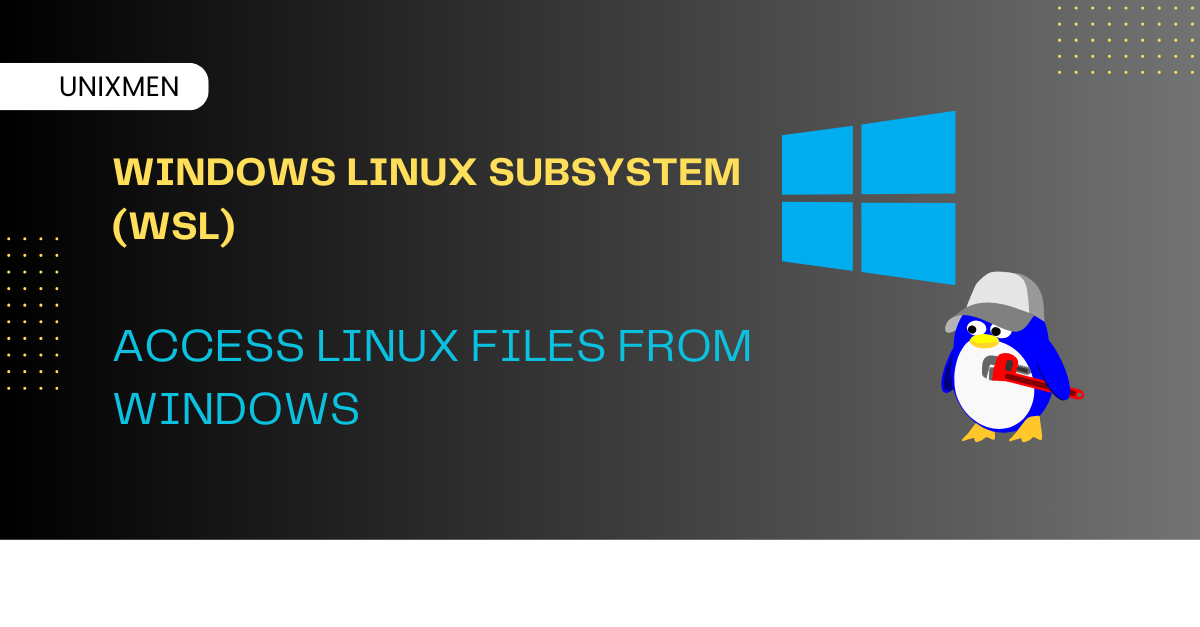Windows Linux Subsystem (WSL): Run Linux on Windows
Fri, 25 Apr 2025 05:26:43 +0000

The Windows Subsystem for Linux (WSL) is a powerful tool that allows you to run a Linux environment directly on Windows. WSL gives you seamless integration between the two most common operating systems. One of the key features of WSL is the ability to access and manage files across both Windows and Linux platforms. Today at Unixmen, we will walk you through the methods to access Windows files from Linux within WSL and vice versa. Let’s get started!
How to Access Windows Files from WSL
In WSL, Windows drives are mounted under the “/mnt” directory, allowing Linux to interact with the Windows file system. Here’s how you can navigate to your Windows files:
Step 1: Locate the Windows Drive
Windows drives are mounted as “/mnt/<drive_letter>”. For example, the C: drive is accessible at “/mnt/c”.
Step 2: Navigate to Your User Directory
To access your Windows user profile, use the following commands:
cd /mnt/c/Users/<Your_Windows_Username>
Replace “<Your_Windows_Username>” with your actual Windows username.
Step 3: List the Contents
Once you are in your user directory, you can list the contents using:
ls
This will display all files and folders in your Windows user directory.
By navigating through “/mnt/c/”, you can access any file or folder on your Windows C: drive. This integration lets you manipulate Windows files using Linux commands within WSL.
Steps to Access WSL Files from Windows
In Windows accessing files stored within the WSL environment is very straightforward. Here is how you can do it:
Using File Explorer:
- Open File Explorer.
- In the address bar, type “\\wsl$” and press the Enter key.
- You’ll see a list of installed Linux distributions.
- Navigate to your desired distribution to access its file system.
Direct Access to Home Directory:
For quick access to your WSL home directory, navigate to:
\\wsl$\<Your_Distribution>\home\<Your_Linux_Username>
Replace “<Your_Distribution>” with the name of your Linux distribution (e.g., Ubuntu) and “<Your_Linux_Username>” with your Linux username.
This method allows you to seamlessly transfer files between Windows and WSL environments using the familiar Windows interface.
Best Practices
At Unixmen, we recommend these best practices for better file management between Windows and WSL.
- File location: For optimal performance, store project files within the WSL file system when you work primarily with Linux tools. If you need to use Windows tools on the same files, consider storing them in the Windows file system and accessing them from WSL.
- Permissions: Be mindful of file permissions. Files created in the Windows file system may have different permissions when accessed from WSL.
- Path conversions: Use the “wslpath” utility to convert Windows paths to WSL paths and vice versa:
wslpath 'C:\Users\Your_Windows_Username\file.txt'
This command will output the equivalent WSL path.
Wrapping Up
By understanding these methods and best practices, you can effectively manage and navigate files between Windows and Linux environments within WSL, enhancing your workflow and productivity.
Related Links
- WinUSB: Create A Bootable Windows USB In Linux
- Run Windows Apps on Linux Easily
- Linux vs. Mac vs. Windows OS Guide
The post Windows Linux Subsystem (WSL): Run Linux on Windows appeared first on Unixmen.
Recommended Comments